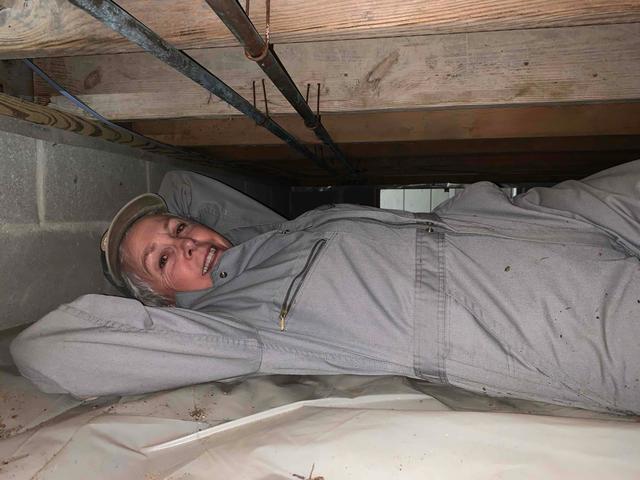
Meet Fran - The Homeowner
Fran called us because she had been having some consistent concerns about her crawl space. She had 40ft of her sill plate replaced due to moisture and fungal damage. The old fiberglass batts had been removed and a new 6-mil vapor barrier had recently been installed. Over the years she had issues with rodents in the crawl space, but she sealed that up herself to stop them. Now her floors were freezing in the winter and wanted to have new insulation installed.
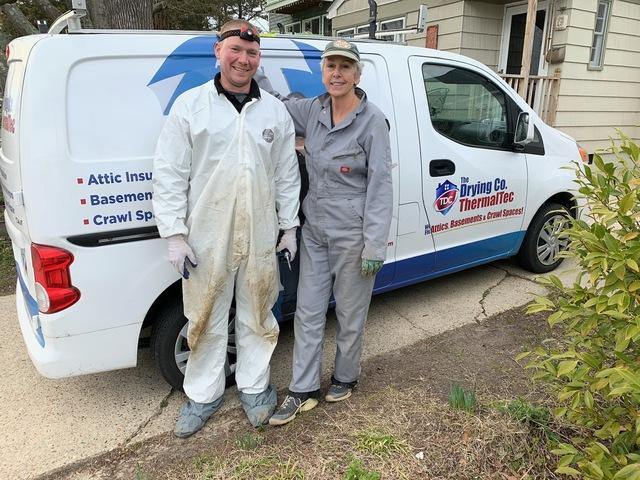
The Inspection - Mike & Fran
Fran is one of our more fearless homeowners. When Mike arrived on-site for her inspection, she was ready to go, fully equipped with her own jumpsuit, and did the inspection with him.
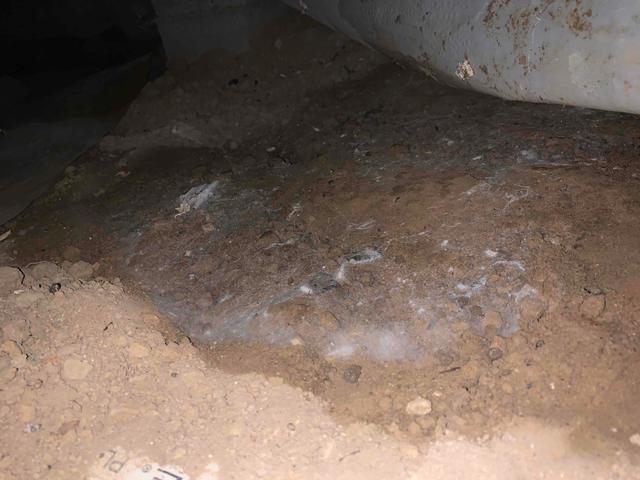
Water Infiltration
Moisture has been seeping into this crawl space causing problems for the homeowner. When we do an inspection, we look for signs of moisture infiltration on the ground, existing vapor barrier, and foundation walls. We are looking for damp spots, efflorescence, moisture stains on walls and vapor barriers, and puddling.
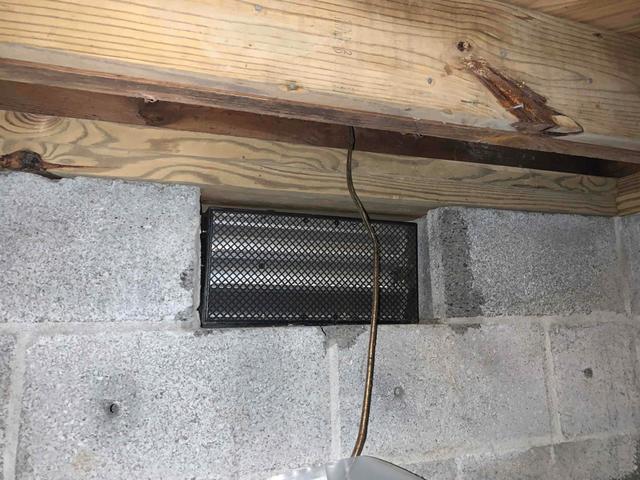
Open Vents
Open crawl space vents are a huge source of moisture in a crawl space. We experience a lot of hot humid weather in our area and open crawl space vents allow that heat and humidity to flow into our crawl spaces, which do not offer enough ventilation to keep the relative humidity low.
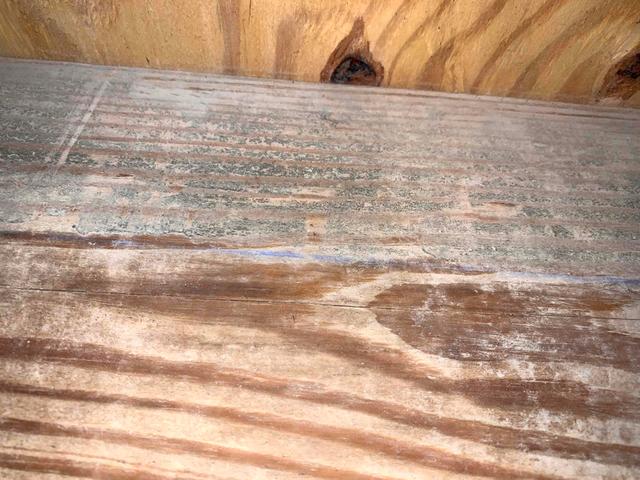
Mold Growth
Mold and mildew grow on organic materials and are a result of high relative humidity and warm temperatures, something we are no stranger to on the coast of Virginia.
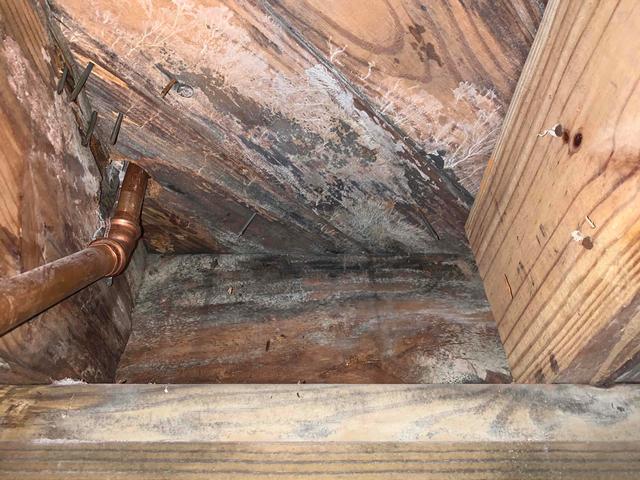
Wood Rot
Wood rot occurs when the wood moisture content reaches about 19%. It is often a result of untreated moisture concerns in a crawl space, or from wood not being dried out after a leak. We look for saturated or soft wood that is usually very dark. We typically see mold near these spots as well.

Falling Insulation
As the humidity and moisture increase in the crawl space, it is absorbed by the existing fiberglass insulation and floor joists. As fiberglass absorbs moisture, it becomes heavier and falls out of the floor cavities. As the material absorbs moisture its fibers are damaged causing it to pull apart from itself. This leaves us with insulation dripping from the ceiling and chunks littering the floor.
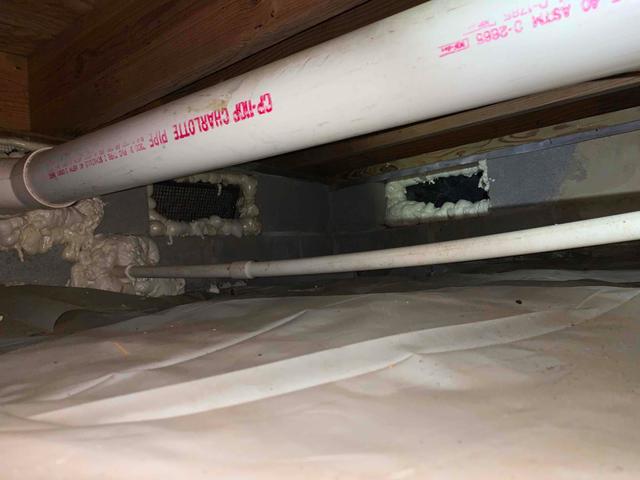
Sealed Vents
Vents and penetrations to the outside are sealed to prevent rodents and air carrying moisture from coming into the crawl space.
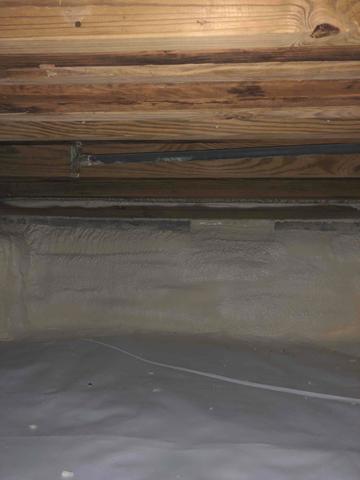
Foam on walls
Closed-cell spray foam was applied to the crawl space walls and over the blocked vents at an R-10. This meets the code for encapsulated crawl spaces and will help Fran have those warm floors she wanted by allowing us to better control the crawl space environment.
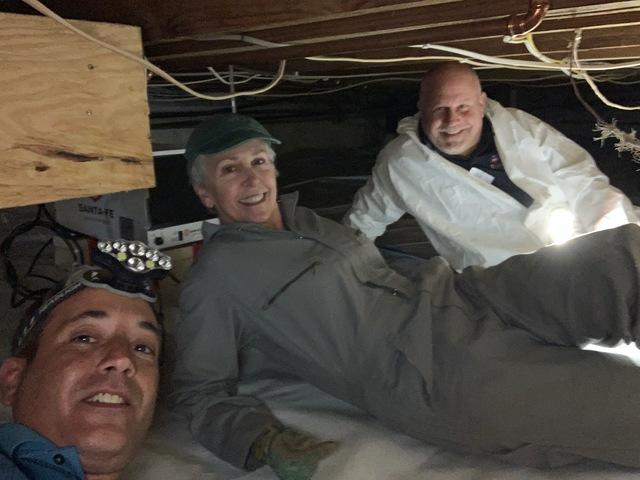
Kevin & Tony with Fran
After the install, Fran asked our team to do one final inspection with her. Kevin and Tony crawled through the space with her and ensure the job was completed to satisfaction
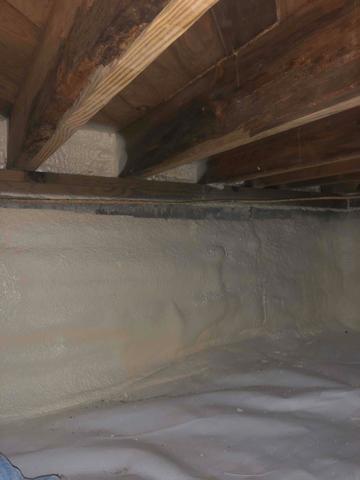
Insulated Rim & Band
The rim & band is a key area to insulate in a crawl space. A lot of air flows in at the rim and band making floors cold and allowing moisture in. By sealing it, we can mitigate both issues and are one step closer to controlling the environment and making the home more comfortable.

